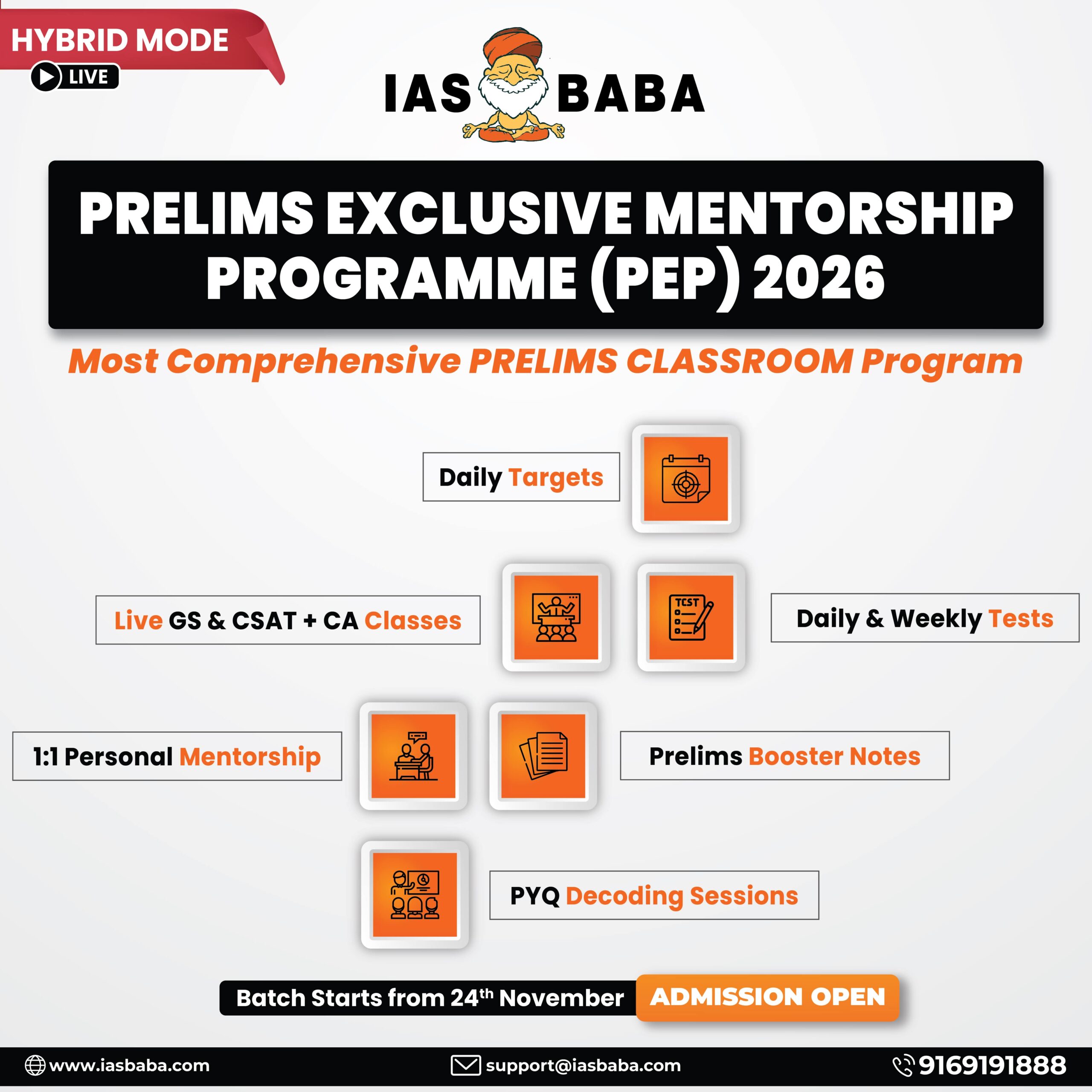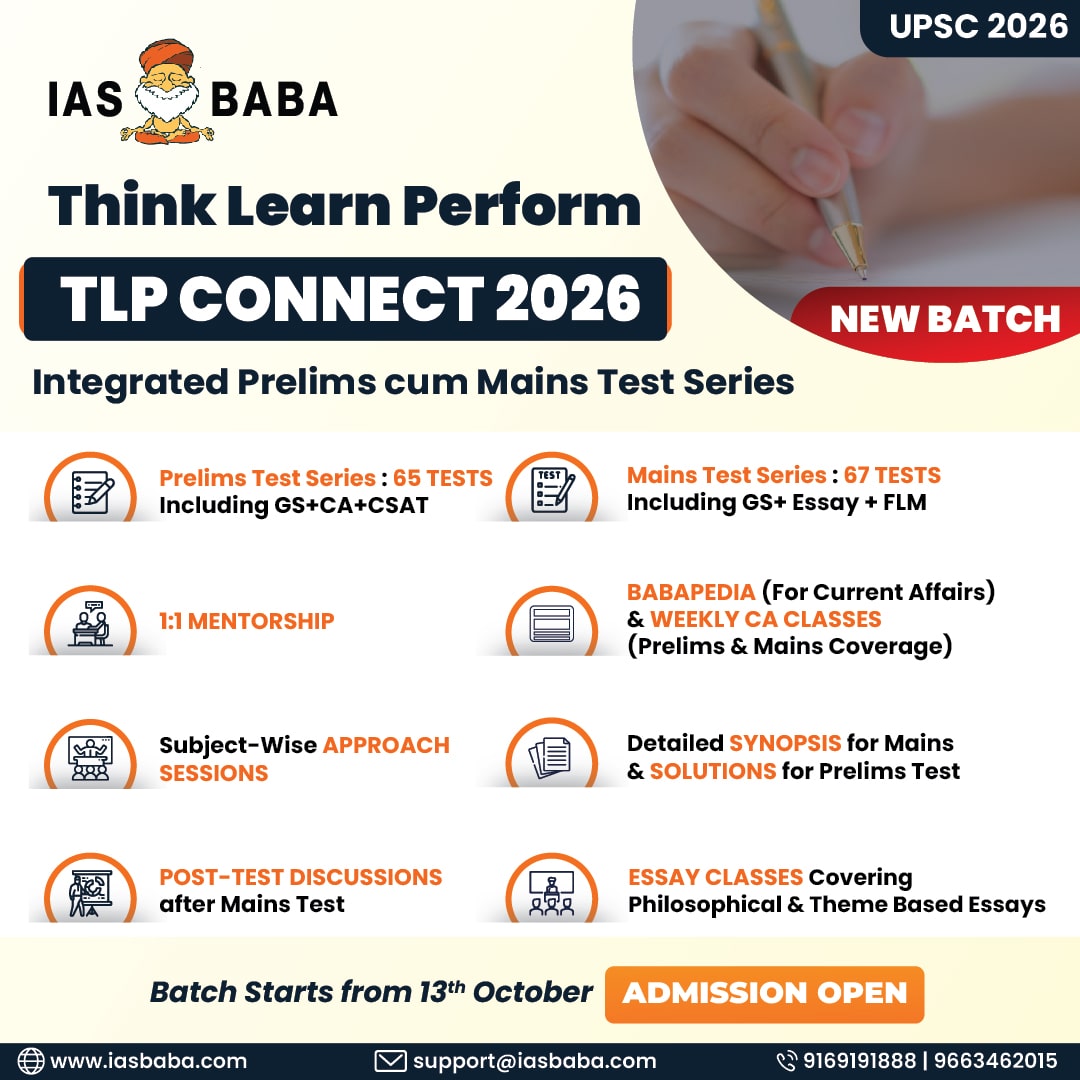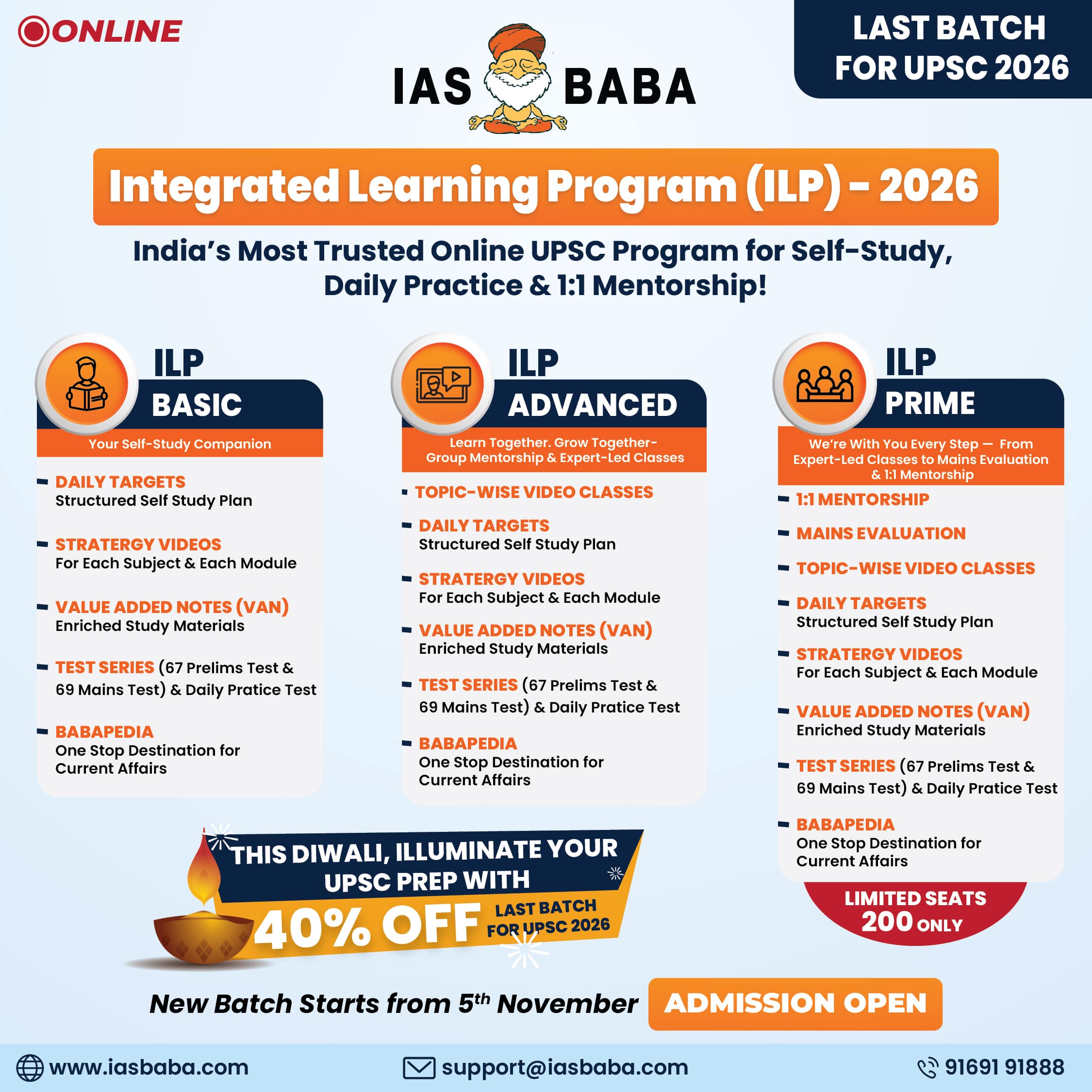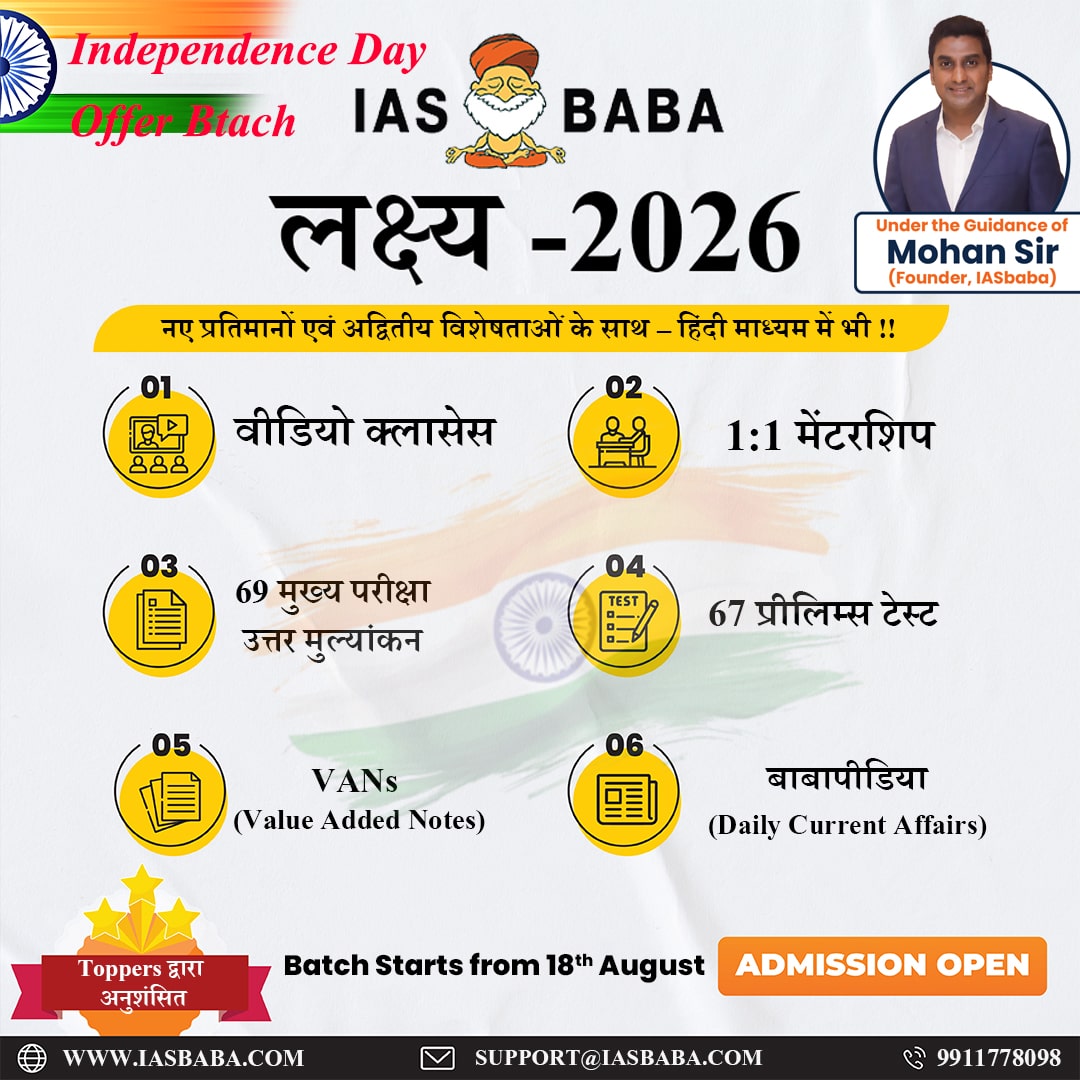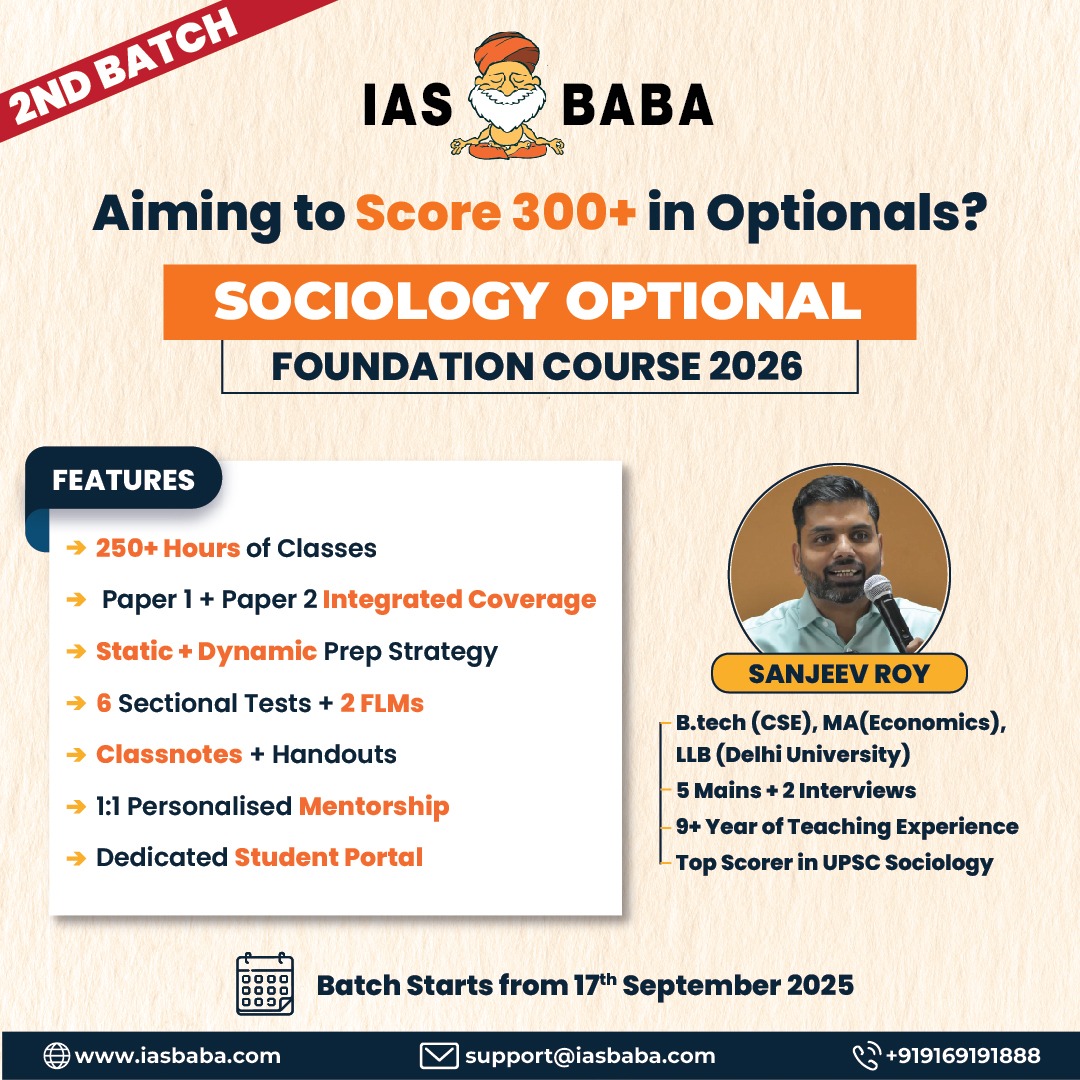IASbaba's Daily Current Affairs Analysis
Archives
(PRELIMS & MAINS Focus)
Category: POLITY
Context: Mining baron and the sitting MLA from Gangavati Gali Janardhana Reddy has been disqualified as a member of the Karnataka Legislative Assembly following his conviction in the Obulapuram Mining Company (OMC) illegal mining case.
Decoding the context: Notification issued by the Karnataka Legislative Assembly stated that Reddy’s conviction triggered his immediate disqualification as an MLA under Article 191(1)(e) of the Constitution and Section 8 of the Representation of the People Act, 1951.
Learning Corner:
Constitutional Provision: Article 191(1)(e)
- A person shall be disqualified for being chosen as, and for being, a member of the State Legislature if he is disqualified by or under any law made by Parliament.
- This clause enables the Representation of the People Act, 1951 to lay down disqualifications.
Representation of the People Act (RPA), 1951 ➤ Section 8(1), 8(2), 8(3): Grounds for Disqualification –
- Section 8(1): Immediate disqualification for specific offences (e.g., promoting enmity, bribery, corruption, terrorism) regardless of sentence duration.
- Section 8(2): Disqualification for offences like hoarding, food adulteration, or Dowry Prohibition Act violations, if sentenced to at least six months.
- Section 8(3): Disqualification for any other offence with a sentence of two years or more, effective from the date of conviction and continuing for six years post-release.
Lily Thomas v. Union of India (2013)
- Supreme Court struck down Section 8(4) of the RPA, 1951.
- Earlier, Section 8(4) allowed sitting MPs/MLAs 3 months to appeal without disqualification.
- After the 2013 judgment, disqualification takes effect immediately upon conviction, regardless of appeal.
Significance
- Curbing Criminalization: With 43% of MPs in the 17th Lok Sabha (2019) facing criminal cases (ADR), immediate disqualification deters tainted politicians.
- Electoral Integrity: Ensures lawmakers adhere to ethical standards, aligning with the RPA’s objective to prevent those who “break the law from making the law”.
- Public Trust: Strengthens democratic accountability.
Source : Deccan Herald
Category: SCIENCE & TECHNOLOGY
Context: The Delhi government has approved five Cloud-Seeding Trials at an outlay of three crore 21 lakh rupees to Combat Air Pollution.
Decoding the context: The Delhi government said that after the trials, scientific evaluations will assess the effectiveness and environmental impact of cloud seeding in reducing air pollution.
Learning Corner:
- Cloud Seeding is a weather modification technique that enhances precipitation (rain/snow) from clouds by introducing certain substances (cloud condensation nuclei) to stimulate cloud droplet formation.
- It involves introducing agents like silver iodide, potassium iodide, or dry ice into moisture-rich clouds to act as nuclei for water droplet or ice crystal formation, thereby inducing artificial rain.
Mechanism
- Suitable clouds (with sufficient moisture and vertical growth) are identified using meteorological data.
- Agents like silver iodide are dispersed via aircraft or ground-based generators. These agents mimic ice nuclei, encouraging water droplets to coalesce or freeze, eventually falling as rain or snow when heavy enough.
- In Delhi’s case, the trials aim to wash away pollutants like PM2.5 and PM10, which contribute to the city’s hazardous Air Quality Index (AQI).
Types of Cloud Seeding:
- Static Cloud Seeding
- Objective: Enhance rainfall or snowfall by increasing cloud droplet formation.
- Mechanism: Injects ice-nucleating agents (like silver iodide) into cold clouds.
- Effect: Promotes formation of ice crystals or raindrops around these particles.
- Use Case: Light rain enhancement during pre-existing cloud cover.
- Dynamic Cloud Seeding
- Objective: Stimulate vertical air movement to increase cloud mass and rainfall intensity.
- Mechanism: A multi-stage process involving large amounts of seeding material to alter cloud dynamics (lift, condensation, coalescence).
- Use Case: Drought mitigation or in areas needing intense rainfall.
- Glaciogenic Cloud Seeding
- Objective: Increase snowfall from supercooled clouds.
- Mechanism: Encourages ice formation in clouds below freezing using materials like silver iodide or dry ice.
- Use Case: Used in mountain regions (e.g., Himalayas, Rockies) to boost snowpack for water storage.
- Hygroscopic Cloud Seeding
- Objective: Enhance precipitation from warm clouds.
- Mechanism: Uses salt particles (e.g., NaCl) as nuclei to attract water vapor, forming larger raindrops.
- Use Case: Tropical regions, including parts of India and UAE.
Source : News On AIR
Category: SCIENCE & TECHNOLOGY
Context: In a significant step toward advancing cleaner energy technologies, the Ministry of Coal has signed the Coal Gasification Plant Development and Production Agreement (CGPDPA) with selected applicants under Category II of its Coal Gasification Financial Incentive Scheme.
Decoding the context: Launched on January 24, 2024, the Financial Incentive Scheme for Coal Gasification has a total outlay of ₹8,500 crore. The initiative aims to achieve 100 million tonnes of coal gasification by 2030, leveraging India’s abundant coal reserves to create a cleaner, more sustainable energy future.
Learning Corner:
- Coal gasification is a cleaner conversion process that converts coal into synthesis gas (syngas) — a mixture of carbon monoxide (CO), hydrogen (H₂), CO₂, methane (CH₄), and water vapor (H₂O).
- This syngas can be used for:
- Generating electricity
- Producing liquid fuels (through Fischer–Tropsch synthesis)
- Making chemical fertilizers (like urea)
- As a feedstock in the petrochemical industry
- How It Works: Coal + controlled oxygen + steam → Syngas (CO + H₂ + other gases)
Why is it important for India?
- Energy Security: India has abundant coal reserves but limited oil and gas.
- Import Substitution: Reduces dependence on imported crude oil and natural gas.
- Clean Energy Transition: Emits less particulate matter and SOx/NOx than direct coal combustion.
- Economic Boost: Supports downstream industries like methanol, ammonia, and DME (dimethyl ether).
Government Initiatives
- National Coal Gasification Mission: Launched in 2021, aiming to gasify 100 million tonnes of coal by 2030, reducing carbon emissions by 20% compared to direct combustion (MoC).
- Policy Push: Revised SHAKTI Policy (May 2025) supports coal allocation for gasification projects, ensuring fuel security.
Source : Hans India
Category: ENVIRONMENT
Context: India, at the Conferences of the Parties to the Basel, Rotterdam and Stockholm Conventions (BRS COPs), called for predictable international financing mechanisms and the mobilisation of domestic resources through tools like progressive taxation, carbon levies, and Extended Producer Responsibility (EPR) to tackle chemicals and waste better for human health and the environment.
Decoding the context: The 2025 BRS COPs (BC COP-17, RC COP-12, and SC COP-1) centred around the theme “Make Visible the Invisible: Sound Management of Chemicals and Waste”, will conclude today.
Learning Corner:
- The Basel, Rotterdam, and Stockholm (BRS) Conventions are three key international treaties aimed at protecting human health and the environment from hazardous chemicals and wastes.
- The three conventions function under a joint administrative framework and meet jointly as the BRS COPs (Conferences of the Parties).
Basel Convention (1989; in force 1992)
- Focus: Control of Transboundary Movements of Hazardous Wastes and Their Disposal.
- Objective: Minimize hazardous waste generation and restrict its transboundary movement, especially from developed to developing countries.
- India: Party since 1992.
Rotterdam Convention (1998; in force 2004)
- Focus: Prior Informed Consent (PIC) procedure for certain hazardous chemicals and pesticides in international trade.
- Objective: Promote shared responsibility in the trade of hazardous chemicals.
- India: Party since 2005.
- Mechanism: Exporting countries must get prior informed consent from importing countries before trade.
Stockholm Convention (2001; in force 2004)
- Focus: Elimination or restriction of Persistent Organic Pollutants (POPs).
- Objective: Protect human health and the environment from long-lasting toxic substances.
- India: Ratified in 2006 (but with reservations on certain chemicals).
Source : Business Standard
Category: HISTORY
Context: The Prime Minister, Shri Narendra Modi, paid rich tributes to the valiant warrior, Maharana Pratap on the occasion of his Jayanti.
Decoding the context: Pratap Singh I, popularly known as Maharana Pratap, was king of the Kingdom of Mewar, in north-western India in the present-day state of Rajasthan.
Learning Corner:
- Maharana Pratap, born Pratap Singh I (May 9, 1540 – January 19, 1597), was the 13th ruler of the Kingdom of Mewar in present-day Rajasthan, reigning from 1572 to 1597.
- A Rajput warrior of the Sisodia dynasty, he is celebrated for his resistance against Mughal Emperor Akbar’s expansionism.
Early Life and Ascension
- Born in Kumbhalgarh Fort to Maharana Udai Singh II and Jaiwanta Bai.
- In 1567, during the Mughal siege of Chittorgarh, Udai Singh II evacuated the capital, relocating to Gogunda.
- Upon Udai Singh’s death in 1572, a succession dispute arose. Udai Singh favored Jagmal, his son with Rani Dheer Bai Bhatiyani, but senior nobles, prioritizing Pratap as the eldest, crowned him Maharana on March 1, 1572, in Gogunda. Jagmal, seeking revenge, joined Akbar’s forces and was granted jaguar of Jahazpur.
Resistance Against the Mughals
- Context: Akbar sought to control Mewar to secure a stable route to Gujarat’s ports. While most Rajput rulers submitted, Pratap refused vassalage.
- Battle of Haldighati (June 18, 1576):
- Fought between Maharana Pratap and Mughal forces led by Man Singh I of Amber.
- Location: Haldighati pass in the Aravalli Hills, Rajasthan.
- Outcome: Inconclusive military victory for the Mughals, but symbolic victory for Maharana Pratap, who escaped and continued guerrilla resistance.
Post-Haldighati Resistance
- Guerrilla Warfare: Post-Haldighati, Pratap retreated to the Aravalli hills, supported by Bhil tribals. He perfected guerrilla tactics, harassing Mughal outposts.
- He established a new capital at Chavand, where he reorganized his administration and continued his resistance.
- Battle of Dewair (1582): Pratap’s decisive victory over the Mughals, reclaiming much of Mewar and reinforcing his resistance.
Source : PM INDIA
Practice MCQs
Q1. Consider the following statements regarding Maharana Pratap:
- He was coronated as the ruler of Mewar at Gogunda after a succession dispute following the death of Maharana Udai Singh II.
- In the Battle of Haldighati, Maharana Pratap was defeated and captured by the Mughal forces led by Raja Man Singh I.
- The Battle of Dewair in 1582 was a significant victory for Maharana Pratap, which led to the closure of several Mughal outposts in Mewar.
Which of the above statements is/are correct?
A) 1 and 2 only
B) 1 and 3 only
C) 2 and 3 only
D) 1, 2 and 3
Q2.With reference to the Basel, Rotterdam, and Stockholm (BRS) Conventions, consider the following statements:
- The Basel Convention primarily deals with the elimination of Persistent Organic Pollutants (POPs).
- The Rotterdam Convention mandates Prior Informed Consent (PIC) before transboundary movement of hazardous chemicals and pesticides.
- The Stockholm Convention is legally binding on the elimination or restriction of POPs.
- India is a party to all three conventions.
Which of the statements given above is/are correct?
A. 2 and 4 only
B. 1, 2 and 3 only
C. 2, 3 and 4 only
D. 1 and 3 only
Q3.With reference to coal gasification, consider the following statements:
- Coal gasification primarily produces syngas, which is a mixture of carbon monoxide and hydrogen.
- Underground coal gasification (UCG) involves gasifying coal in situ without mining it.
- India aims to gasify 100 million tonnes of coal by 2030 under the National Coal Gasification Mission.
Which of the statements given above is/are correct?
A. 1 and 2 only
B. 2 and 3 only
C. 1 and 3 only
D. 1, 2 and 3
Comment the answers to the above questions in the comment section below!!
ANSWERS FOR ’ Today’s – Daily Practice MCQs’ will be updated along with tomorrow’s Daily Current Affairs
ANSWERS FOR 8th May – Daily Practice MCQs
Q.1) – c
Q.2) – b
Q.3) – a




